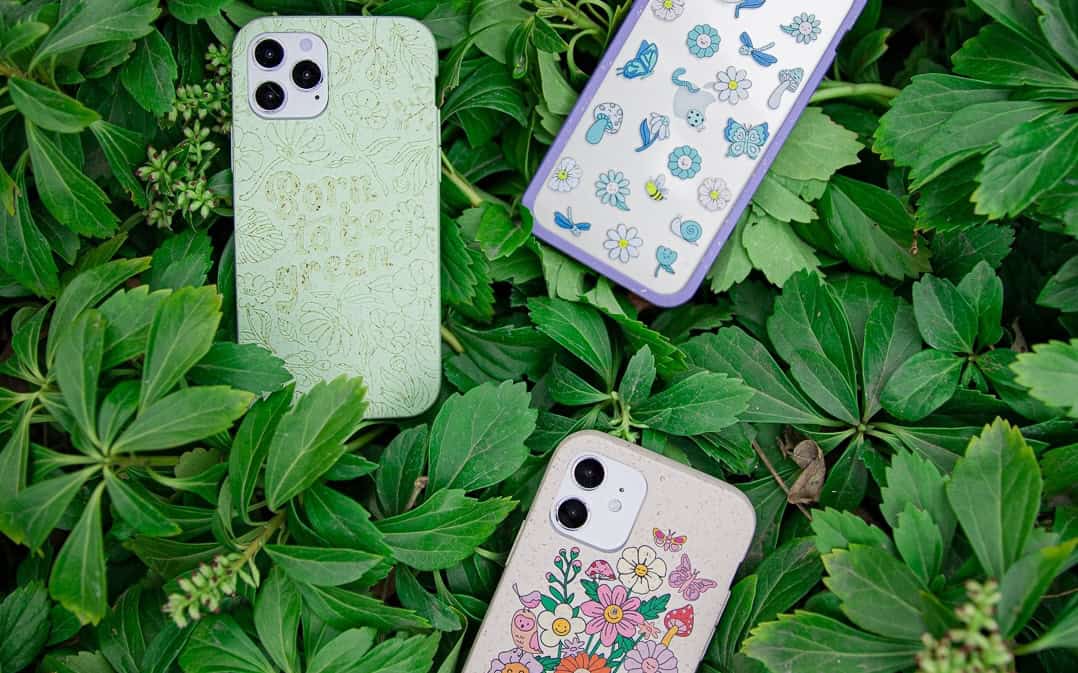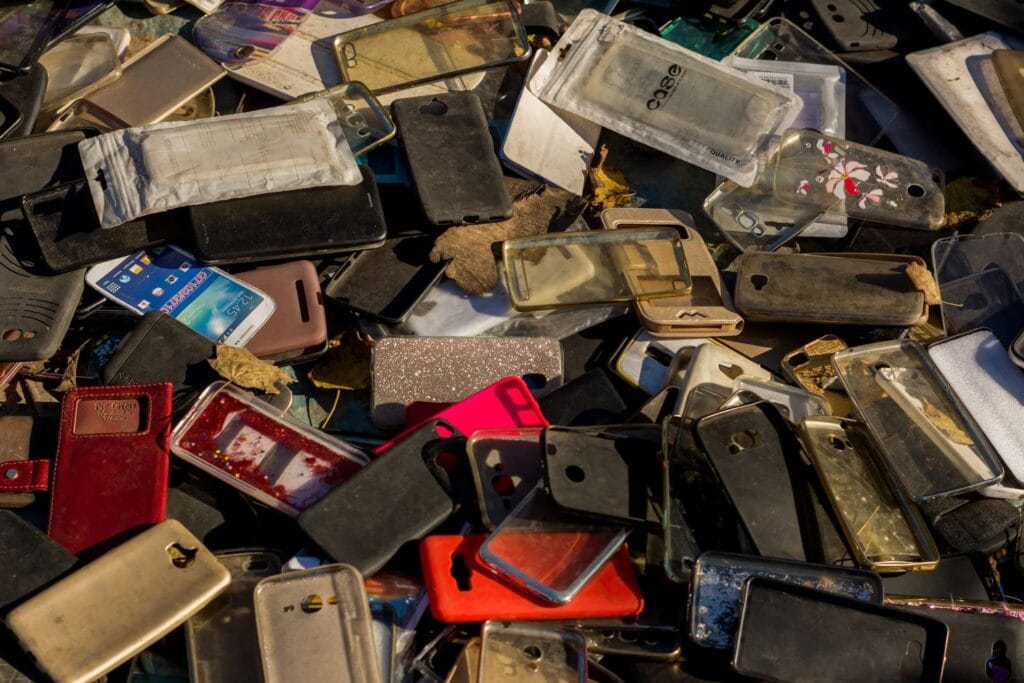
How Compostable Phone Cases Are Creating New Opportunities in Green Business

Table of Contents
We swap phones every few years. But have you considered what happens to the old cases? Most, made of hard plastic or synthetic rubber, end up in landfills for centuries.

Compostable phone cases flip that script. They protect your phone, look great, and when their time is up, they literally return to the earth.
Let’s dive into how they work, what they’re made of, and why they represent a quiet revolution in sustainable tech living.
What Are Compostable Phone Cases?
A compostable phone case is made from plant-based and biodegradable materials that can fully break down in composting conditions. Unlike traditional plastic cases that can take hundreds of years to decompose, these eco-friendly alternatives break down within a few months, leaving no trace of toxins or microplastics.
It’s part of a growing shift toward circular design, creating products that don’t just end when you throw them away, but actually positively re-enter the natural cycle.
The magic behind compostable phone cases lies in their material science. Most are crafted from biopolymers blended with natural fibers like flax straw, bamboo, or cornstarch.
Companies like Pela Case and Wave Case have been early pioneers in this movement. They’ve built successful brands around the idea that eco-friendly doesn’t have to mean boring, offering stylish designs while maintaining their environmental ethos.

The most famous example comes from Pela Case, which uses its proprietary Flaxstic blend, a mix of flax straw waste and biopolymer elastomers. It’s flexible, durable, and 100% compostable.
Other notable players include:
- EcoBlvd – known for bright designs made from plant-based materials.
- Woodcessories, which uses wood and bio-based polymers.
- Popsicase, made from PPLA, a renewable polymer derived from plants.
- Tallpine Cases, featuring wood fiber blends with a minimalist touch.
Each brand has its unique formula, but the goal is the same. Create a tough, stylish case that won’t harm the planet.
How Compostability Works
Compostable phone cases are designed to break down within 6 to 18 months under composting conditions. Some are home-compostable, while others require industrial composting facilities where higher temperatures speed up the process.
For home composting, you can place the case in your compost bin with other compostable waste like fruit peels and garden trimmings. Ensure it is in contact with moist compost and turned regularly to facilitate breakdown. It’s crucial to maintain a balance of green and brown materials in your compost pile to optimize decomposition.
When properly composted, these materials turn into water, carbon dioxide, and organic matter that enriches the soil. There won’t be any toxins or residue.
To ensure quality, look for certifications such as EN 13432, ASTM D6400, or OK Compost, which guarantee compostability under specific conditions. You can read more about these global composting standards on the European Bioplastics Association.
Environmental Impact
The numbers speak volumes.
Compostable phone cases generate up to 80% less solid waste, use 34% less water, and emit 30% less CO₂ during production compared to regular plastic cases.
Pela Case’s Impact Report reveals that their take-back and recycling programs have kept over 48 million plastic bags’ worth of waste out of landfills and oceans.
By returning to the soil or being upcycled, these cases reduce dependence on petroleum-based plastics and help cut down on ocean microplastic pollution, a massive win for both people and the planet.
The Drawbacks You Should Know
Let’s be real, compostable cases aren’t perfect.
- They’re more expensive, usually priced between $40 and $60.
- Some may wear out faster than hard plastic cases, especially under heavy use.
- Not all are home-compostable; some require industrial conditions.
- If tossed into a landfill, they won’t decompose properly due to the lack of oxygen and microbial activity.
It’s a tradeoff, slightly less durability, for a product that’s infinitely better for the planet.
Biodegradable Phone Case vs Compostable Phone Case
This is one of the most common misconceptions.
All compostable products are biodegradable, but not all biodegradable products are compostable.
Biodegradable simply means it breaks down eventually, sometimes over decades, and may still leave behind toxins or microplastics.
Compostable, on the other hand, means it breaks down quickly and completely under composting conditions, leaving behind nutrient-rich soil with zero harmful residue.
If you’re unsure, look for certified compostable labels to ensure the product meets international standards.
Market Impact and Certifications
Compostable phone case brands are leading the way in responsible business practices.
Companies like Pela are B Corp certified, 1% for the Planet members, and Climate Neutral Certified, proving their entire operation, from materials to manufacturing, meets high ethical and environmental benchmarks.
And they’re tackling a serious issue: according to UNEP, less than 5% of plastics are recycled globally. Compostable materials present a scalable, eco-friendly alternative in a world drowning in plastic waste.
The Business Potential Behind Compostable Phone Cases
Compostable phone cases aren’t just a trend. They represent a growing segment in the $70 billion global smartphone accessories market. As consumers become more conscious of their choices, sustainable accessories are gaining traction fast.
Entrepreneurs looking to start a sustainable compostable phone case business can explore multiple angles:
- Private Labelling: Many compostable case manufacturers offer white-label services, allowing startups to build their own sustainable brand without massive R&D costs.
- Build circular models: Introduce “return and compost” programs where customers send back used cases for proper disposal or reuse.
- Local Manufacturing and Circular Models: Building a local supply chain and encouraging “send-back for composting” programs can strengthen brand authenticity and reduce carbon emissions.
- Partnerships and Marketing: Collaborating with eco-friendly influencers or sustainable tech retailers can amplify reach while staying true to green values.
The market for sustainable tech accessories is still relatively untapped, which means early movers have room to differentiate through design, materials, or even storytelling around impact.
The Consumer Shift That’s Driving Change
The move toward compostable phone cases is part of a larger wave where sustainability is becoming mainstream.
A report from Deloitte reveals that 46% have purchased at least one sustainable product or service in the past year, highlighting a growing trend towards eco-friendly choices worldwide.
While cost concerns have slightly affected adoption rates, the data demonstrates that sustainability is an increasingly important factor in everyday buying decisions.
For businesses, this means one thing: sustainability sells. Whether it’s packaging, marketing, or partnerships, transparency and eco-innovation are now key growth drivers.
User Experience & Durability
Real users often describe compostable cases as softer and grippier than standard ones. They absorb shocks differently, which some people actually prefer.
However, you might notice minor discoloration or wear over time.
Most users report that compostable cases offer solid drop protection, though if you’re extremely outdoorsy or accident-prone, a hard-shell case might still be your safest bet.
Disposal & End-of-Life
The beauty of compostable products lies in how they exit the world.
If you have access to a composting facility, you can toss your case into the industrial compost stream, where it will fully break down within months.
Brands like Pela even offer take-back programs so you can return your old case for proper recycling or composting if you don’t have local access.
Just make sure it doesn’t end up in regular trash. Landfills lack the microbial activity needed to decompose it properly.
Best Practices for Eco-Shoppers
- Check the label: Is it home-compostable or industrial?
- Buy from transparent brands: Look for certifications and clear material details.
- Consider used options: Reusing existing cases is sometimes the most sustainable move.
Being conscious of how your phone case was made and how it will end its life is one of the easiest steps toward more responsible tech use.
Compostable phone cases show that even small lifestyle swaps can make a big environmental impact. They challenge the idea that sustainability means compromise instead of proving it can be both stylish and smart.
If you care about the planet and your tech, this is one of those upgrades that just makes sense. Next time you change your phone, think about what’s wrapping it and where that case will end up.
Because in a world built on fast consumption, choosing something that returns to the earth might be the most futuristic move you can make.
For aspiring entrepreneurs and sustainable brands, this isn’t just a trend, it’s a business opportunity waiting to grow.








